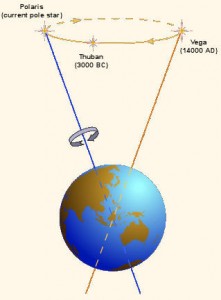BY: CARRIE FILIPETTI
“It’s just embarrassing. Period.”
So says Noel Tyl, world-renowned astrologer and author of 33 textbooks, on the unfounded claims University of Minnesota astronomer Parke Kunkle has circulated on the irrelevance of the modern zodiac.

Kunkle – and thousands of others who immediately jumped on the internet and media bandwagon – argues that the modern zodiac signs do not take into account the wobbling of the earth on its axis, which has affected the position of the stars since the origination of the horoscope 2,000 years ago.
Need help visualizing it? The most common example is to picture the Earth as a top. As the top spins, it generates a small wobble (for the Earth, this is caused by the gravitational pull of the Moon and is called the Obliquity of the Ecliptic). As the top turns, the handle points to different places in the Zodiac, creating, at least for the Earth, a circle of reference that is complete in 22,000 or 23,000 years.
Kunkle also introduces Ophiuchus, a thirteenth sign in the zodiac. The zodiac is a line of stars that lies across the ecliptic, the path the sun takes across the celestial sphere throughout the year.
“It’s just not to be believed,” Tyl continues. “I remember debating people who were writing books about this thirteenth sign [Ophiuchus] 23 years ago in Detroit,” says the Harvard educated astrologer. “It’s an old, haggard point of academia.”
Tyl, who won the United Astrology Congress’s coveted Regulus award in 1998 and has developed eerily accurate astrological charts of everyone from Savonarola to Marcel Proust to Johnny Carson and Madonna, explains that the wobble in the earth’s axis has already been accommodated in the western, tropically-oriented system.
As Tyl explains, a system with reference to the constellations and stars is called sidereal reference, based on the Latin word for star. By contrast, a tropically-orientated system is one in which one emphasizes the orientation of the Earth relative to the Sun. This is the system used by the West. As Tyl explains, “The sidereal constellations have absolutely nothing to do with modern day astrology, because things have shifted; however, the archetypes that are the grounding of astrology endure.”
What does this mean for Kunkle’s claims? It means that the Western astrological system does not rely on the Earth’s position relative to the stars and therefore, the wobbling of the Earth has no effect on our astrological signs.
“The very justification for the tropical zodiac is that precession – about 56 seconds of arc a year – from the ancient times when all of this was formulated to today,” says Tyl. “The wobble of the Earth on its axis calls into play constellational references which no longer ground the thought of western tropical orientated astrology.”

In other words, for those less studied in astrology and astronomy, the wobbling of the Earth on its axis has already been accommodated for within the Western tropical system.
This isn’t the first time astrology has been a target for the masses. “I remember one movement coming up with the sign of the whale,” Tyl recalls. “Can you imagine that? It’s just not relevant. This is just not relevant. This will not affect one single astrologer in his or her work on this planet.”
So as it turns out, I’m still a Pisces, an Aquarian is still an Aquarian, and the world, despite its pesky wobbling, is as it should be.
For more on Astrologer Noel Tyl, visit his website.


A little late, but thank you for featuring Noel Tyl; he is the pre-eminent astrologer of our time!
This site was… how do I say it? Relevant!! Finally I’ve found something that helped me.
Cheers!
My blog: seo Leighton Buzzard (Andrea)